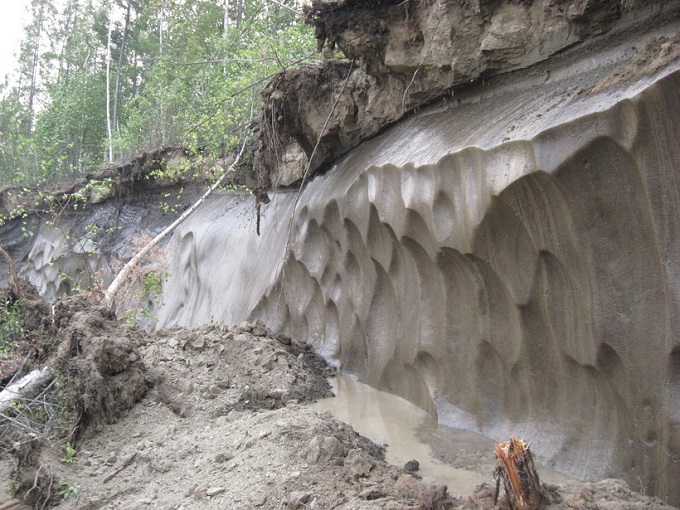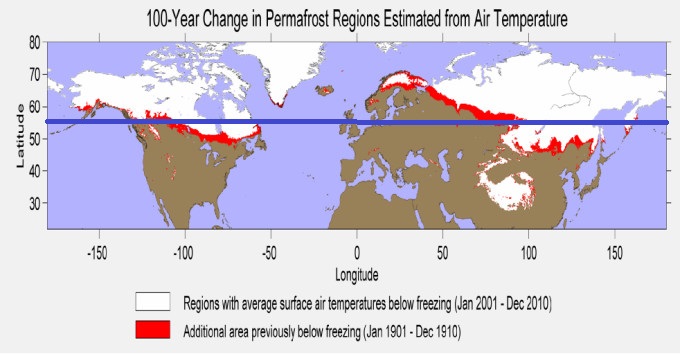Трудовой кодекс

The anthropogenic concept of global warming from official climatology is built on a simple model: because of human activity (greenhouse gas emissions), the world is becoming warmer and for this reason the ice and permafrost are melting.
What comes first: warming or melting ice
But ice itself is an important source of cold on the planet and its giant battery.
Let’s at least, for the sake of justice, consider the second possible variant of global warming: the ice is melting and this is getting warmer all over the planet.
The first question a reader may have is: "Why is this ice that has been lying for centuries suddenly started to melt?"
I answer. There are two types of ice on our planet: ordinary ice and ice located in those latitudes where according to the laws of physics of ice should not be. As the ice fell into these latitudes, let us leave it outside the scope of the discussion. The fact is that this ice is still lying there, and anyone who doubts can touch it with his hands - this ice is usually called "permafrost".

This ice melts and always melted under the influence of radiation from a "star named the Sun." Just as snow lying on permafrost melts in spring, permafrost melts under the influence of solar heat until the next snow falls. Witnesses to this are the powerful rivers of Siberia, Canada and Alaska, feeding on meltwater of permafrost.
“Good,” you might say, “But why hasn't the climate been warmer before, and now it's getting warmer?”
I answer: the climate is affected not only by the presence of ice, but the contact area of this ice with the surrounding air and water, which carry its cold throughout the planet. While only the thickness of the ice sheet was decreasing, and not its area, this did not affect the Earth’s climate. But in recent decades, the area of "permafrost" has already begun to actively decrease, and this immediately affected the climate - it began to warm.
In my opinion, this is a much more coherent, simple and understandable concept of global warming than the one that 90% of climate scientists around the world adhere to. According to which a handful of "insects" swarming around the planet (rather than an omnipotent "star named Sun"!), heated it up so much that the "eternal" universal ice began to melt.
If these arguments are enough for you, then reading is not necessary. And for doubters, I will give additional evidence of their innocence.
The less ice, the more heat
To verify this assumption, let's look at a map of permafrost in the northern hemisphere of our planet.

The blue line I marked on the map the 55th degree of north latitude.
As you can see, on the 55th parallel of the Earth, permafrost is not everywhere, but according to the laws of physics, every point on this line receives the same amount of solar energy. Of course, the influence of the warm meridian currents of the North Atlantic is affecting, but in North America the permafrost extends further south precisely on the Atlantic coast. And the US east coast is free from permafrost at this latitude.
In other words, if there is no permafrost in Berlin and Moscow, why should it be in Irkutsk or Chita, located at approximately the same latitudes?
According to the laws of physics, there should be no ice lying south of the 55th parallel (in our example). So it melts (and always melts!) under the influence of solar heat regardless of the presence or absence of greenhouse gases.
To make sure that in the permafrost zone the ice will melt under the influence of solar radiation, it is possible in a simple experiment. Build a simple thermos from two glass glasses, put an ice cube in it and put this design in the sun. You will see with your own eyes how the ice in a thermos soon melts under the influence not of the ambient temperature, but by the force of solar radiation.
Primarily - melting ice
So, it is ice melting that is primary, and not the warming caused by human activity. You can touch this ice with your hands and make sure that it melts experimentally. Moreover, all the vegetation in the permafrost zone lives due to melt water on the surface of the ice sheet, there is no other liquid water in these places.
It is melting ice that is the main engine of global warming, which is why all the main and brightest hotbeds of warming are concentrated in the Arctic, where melting ice of permafrost is concentrated.
For the same reason, real global warming constantly overtakes climatologists' forecasts based on the anthropogenic concept of what is happening. According to this concept, warming should occur smoothly and gradually, since greenhouse gases generated by man gradually accumulate in the atmosphere. And, in turn, humanity is trying to reduce the emission of harmful emissions.
In fact, permafrost thawing is accelerating due to the destruction of ice sheets, their fragmentation and thermokarst processes, which in turn are enhanced by the effect of global and global warming.
The acceleration of global warming is not explained in any way by the anthropogenic concept, and this is its - an anthropogenic concept - harm to humanity. Under the lulling "purr" of climatologists about the 2050s or 2100s, we hopelessly lose time and resources that need to be spent on preparing for what will inevitably come.



